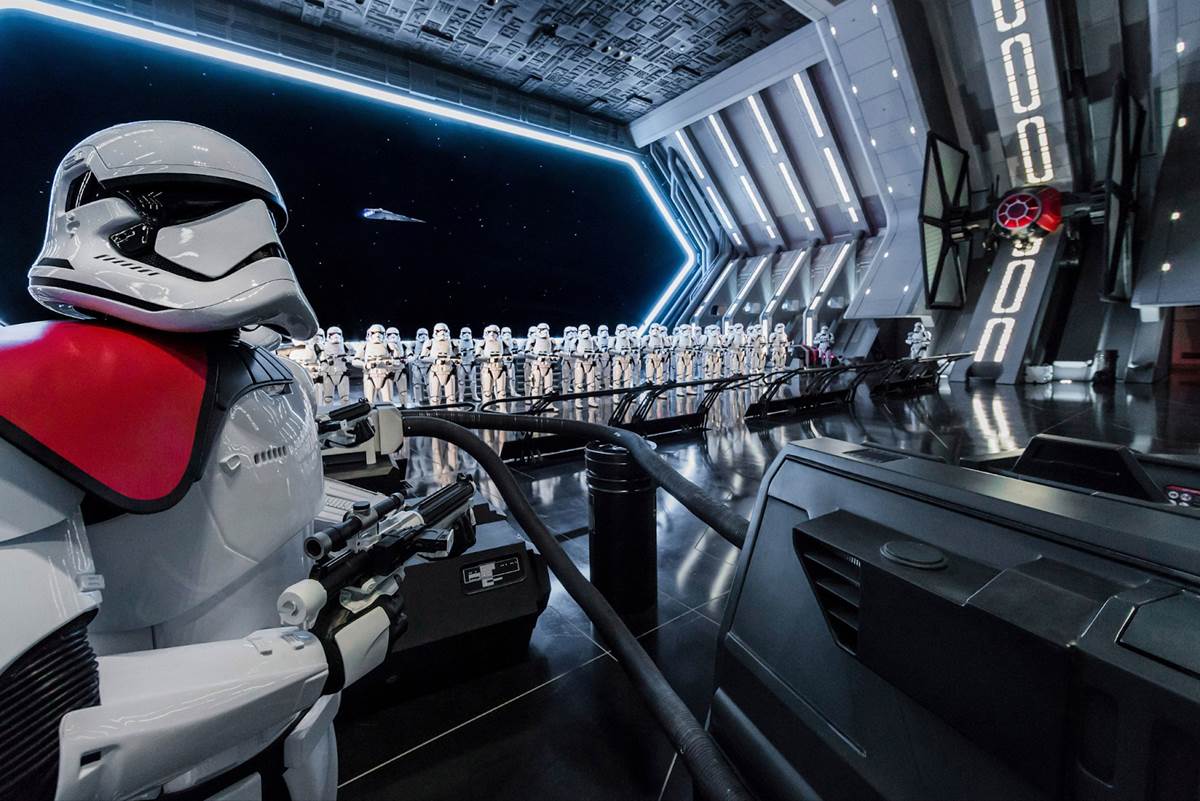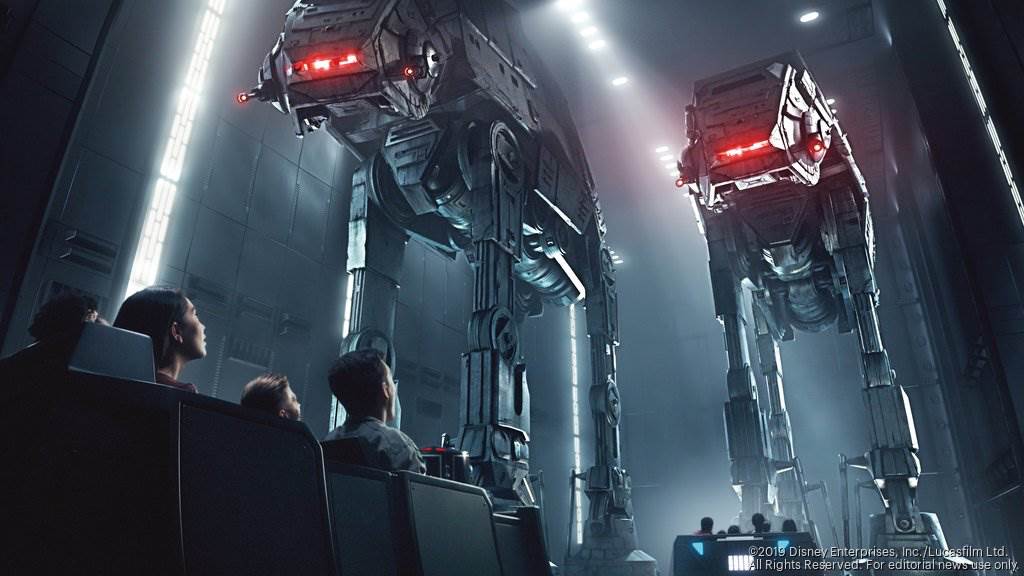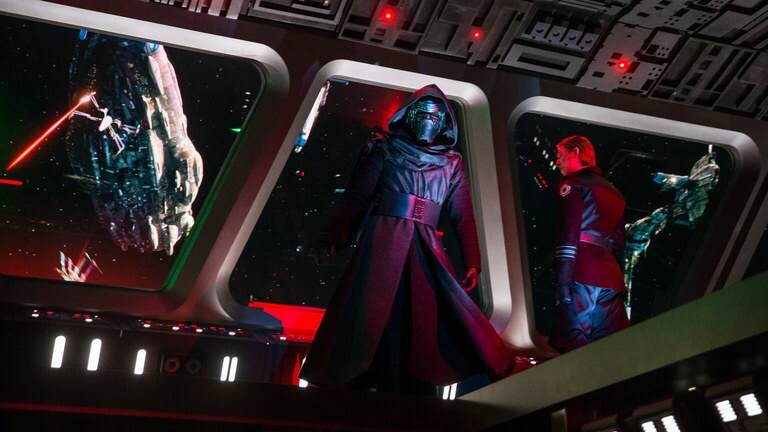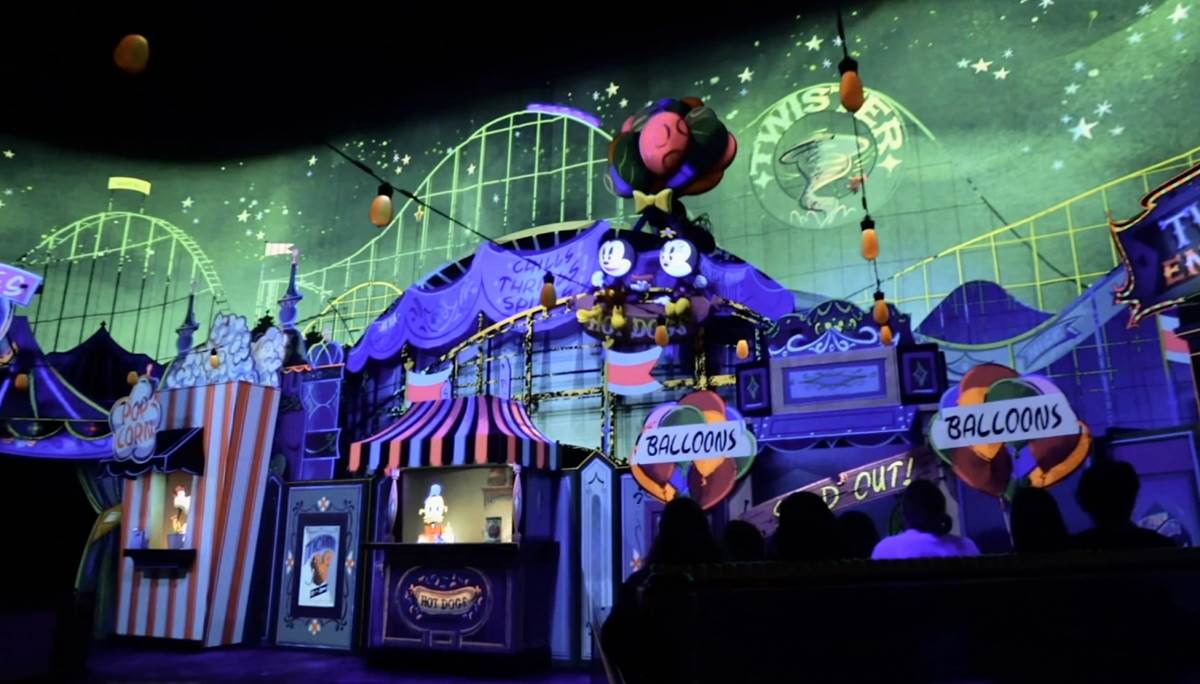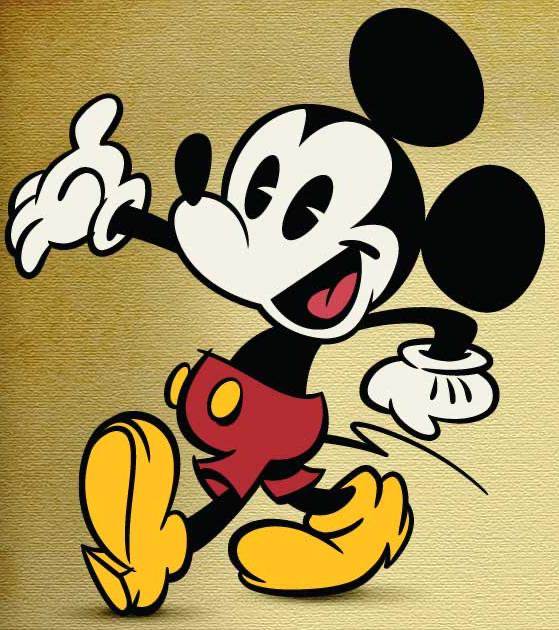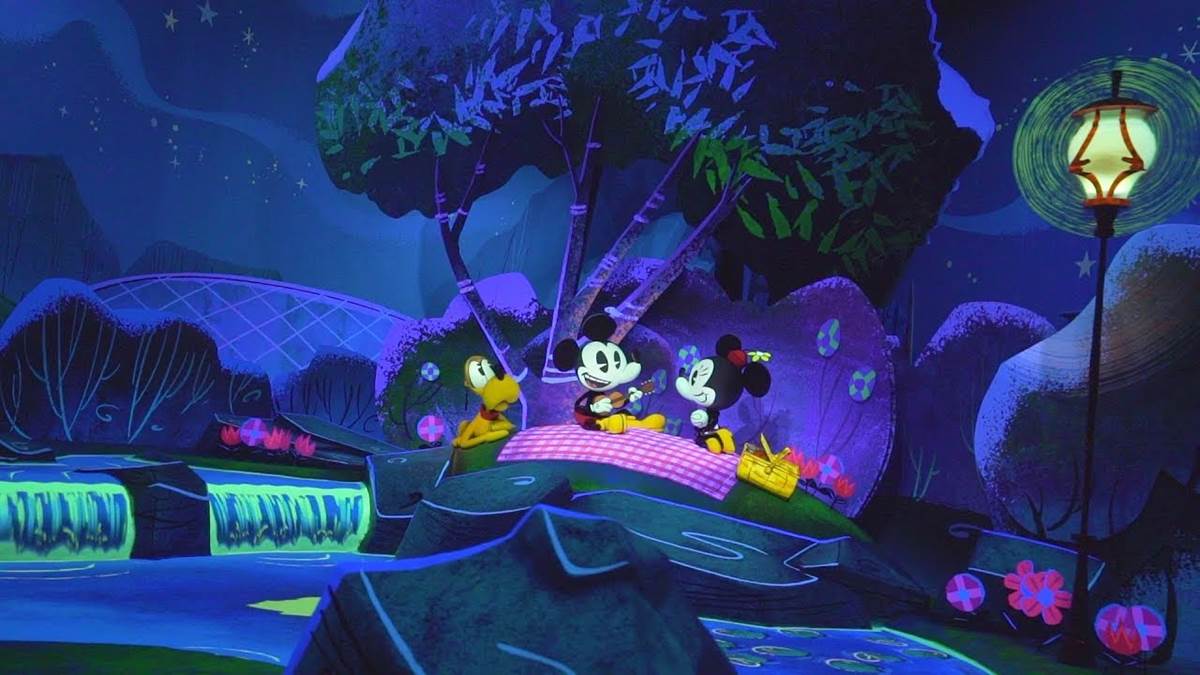Popular video game engines like Unreal, Frostbite, and Unity are powerful tools used to support the mechanics of gameplay and the design of the worlds and environments that players can inhabit and adventure in, but more and more companies outside of gaming are utilizing the flexibility of this technology for their own products. One of these companies is Walt Disney Imagineering, who are known for bringing immersive worlds and environments into physical reality at destinations around the globe.
During a session at SIGGRAPH 2023 in Los Angeles, a handful of Imagineers made the drive over from Glendale to share how they “Bridge Virtual to Physical” using two similar yet very different attractions that are now open at Walt Disney World and the Disneyland Resort – Star Wars: Rise of the Resistance and Mickey and Minnie’s Runaway Railway.
Using the guise of Rise of the Resistance, we were shown mid-construction footage of Star Wars: Galaxy’s Edge (which has now been open at both destinations for a few years), while being told that every inch of that land and its signature attraction were 3D modeled inside of a computer using Unreal engines.
From there, it was a showcase of how they used a combination of different softwares (both common and proprietary) using the game engine to essentially build the attraction facility, and while that building is being constructed in the real world, putting the different touches in to make the attraction a full experience. Examples were even shown that as media was actually being generated for the attraction, say the dogfight taking place outside of the windows in the cannon room of the attraction, the actual footage could then be added into their game engines as they programmed ride vehicle motion to authentically see what a guest would see from various angles.
This ranges from everything that you see outside of the windows on the attraction, to the media featuring the actual stars of the sequel trilogy. Obviously, that footage wasn’t available so early on, so similar footage featuring stand-ins was shot and filmed and placed within the mockups where needed. One example of this that was shown featured the interrogation chamber, where you see Kylo Ren above, all perfected before installation thanks to this embedded footage.
The same concept would go for effects like laser blasts, wind gusts, et al, that could all be timed out digitally and shown in their game engine-driven mock-up, being tweaked and adjusted while the physical ride is still being built. Something that, in the past, would normally have to wait until the facility was complete, with programmers riding through and programming as needed.
Of course, once the actual facility is built, there are some tricks that designers and creatives on the team must make sure works as intended, so even if the ride vehicles have not yet been approved to strap people into yet, a rolling office chair with a colleague pushing behind will have to suffice to make sure everything looks as good as it did in the digital mockups.
Interestingly, especially for those who have been on the final version of the attraction, some mockups were shown with different characters in the attraction. Some were outwardly described as blue sky ideas of possibilities showing what the ride could potentially be, but some seemed very close to the final product. As an example, some bits were shown that had C-3PO in the AT-AT Room and Admiral Ackbar (or Beck) in place of Rey during the pre show, which could also be a testament to how easily switched out assets could be using the game engine before final installation instead of my own rambling about what might have been the original intent of the attraction.
While much of what was shown to SIGGRAPH attendees was proprietary, and thus not available to be shown here, you can take a look at the full final product in our video below.
Then it was on to Mickey and Minnie’s Runaway Railway, which was briefly explained as being designed in the same way with the same game engines – but had one very specific difference which was the primary focus of this half of the session. How do you bring highly stylized 2D animated characters into a real 3D world. Fans will remember that when the attraction was first announced for Disney’s Hollywood Studios, a term was used: “2 ½ D.”
In this SIGGRAPH Panel, we got to hear that again, which was more or less a guiding principle into how a lot of the digital media would interact with painted flats and physical environments, but namely highly stylized Audio-Animatronic figures, which are modeled after 2D characters but in 3 dimensions. Fans of classic animation know of the head-on pose, where we stare straight at a character's face, or a ¾ pose where we see a character tilted. In the case of Mickey Mouse, this is the view where we see one ear at the top of his head and one down lower, depending on which way he is looking.
You know, like this:
But how do you take that look and incorporate it into the real world? Luckily, those same game engines and proprietary software mixed with Maya helps. A series of tests were shown, bringing in assets and songs from the popular Mickey Mouse shorts of the latter day, to see what this would look like on a dimensional Audio-Animatronics figure. Using a similar technology to the Frozen sisters in Frozen Ever After at EPCOT or The Seven Dwarfs in Seven Dwarfs Mine Train at Magic Kingdom, the faces of Mickey and Minnie would be projected onto a spherical surface on the figure. Much of this animation was pre-done in the software, but interestingly, real physics were incorporated into its design.
Looking at the photo above, you can see that Mickey’s head is substantially larger, especially in width, than the rest of his body. Thanks to these adjustments in the animation software, the actual capabilities of the motors of the animatronic figure were programmed in, so the character can be animated, again ahead of actual installation, in an actual manner and placed into a context within the actual attraction in the full mockup using the game engines. As the design nearly completes, you can see ride POVs, angles, effects and everything including the reach envelope. Yes the design using these tools is so accurate, Imagineers can actually gauge how far a guest can reach out of the vehicle, and what they would be able to touch and grab, or hit their fingers on if putting their hands up in a climactic moment.
Once the Audio-Animatronics are installed with the animation, they are given a final look to make sure their “true-weight” is realized. While yes, there are limitations to the physical figures, they still have to look as they would canonically. If you watch a Mickey Mouse short and see that Mickey Mouse in his new ride isn’t moving the same way, there would be a break in the immersion, so any tweaks in this regard are made in this phase before opening the doors of the attraction to guests.
You can check out the full ride as it appears at Disneyland Park where it opened earlier this year in our video below:
Both Star Wars: Rise of the Resistance and Mickey and Minnie’s Runaway Railway can now be experienced at either Walt Disney World or the Disneyland Resort. For more information on what goes into 3D modeling when it comes to attraction design at the Disney Parks, I also highly recommend The Imagineering Story and Behind the Attraction, both of which can be found on Disney+.

